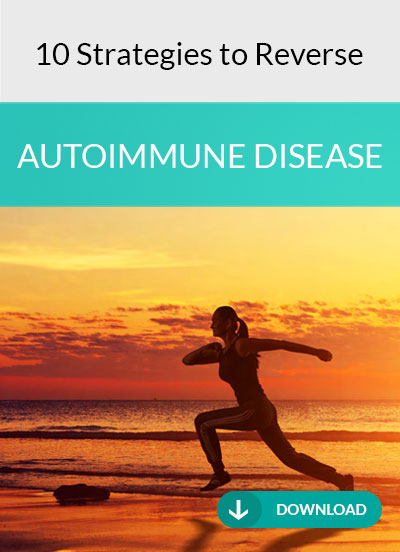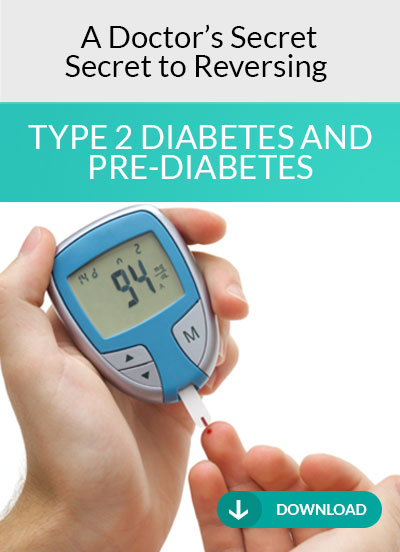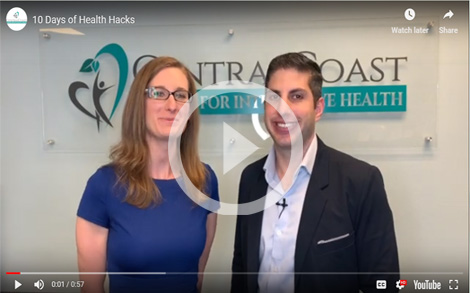How To Get Motivated To Exercise—It’s Easier Than You Think
When most of us hear the word exercise we picture athletes breaking a sweat as they work their bodies to the limit. In your mind, you might even think of exercise as something that’s hard to do. When you’re fatigued or battling a health condition like rheumatoid arthritis or multiple sclerosis for example, the last thing you feel like doing is running a marathon. And fitting exercise into a busy schedule just doesn’t seem realistic. Who has time to exercise when there are kids to take care of and a demanding work schedule?
Here at Caplan Health Institute, we believe the answer is to reinvent the way you think of exercise. If you want to know how to get motivated to exercise, even if you’re not feeling your best, the key is to change your mind about what the word exercise really means. In fact, for most people, getting motivated to exercise is a mental challenge at first.
Address Anything Holding You Back
Not feeling well with a chronic health condition? Or maybe you’re just too tired after a long day of work. Exercise can be a part of your healing. It reduces inflammation, improves circulation, and even gets the bowels moving by stimulating gut peristalsis, relieving constipation, and promoting detox pathways. However, let’s not put the cart before the horse. Before you can start exercising, the first step is to prep your body for simple exercises and easy stretches. Most of our patients aren’t feeling their best at first. Because they’re fatigued, the last thing they want to do is a lot of physical activity. They may even feel worse if they overdo it.
We have other patients who were working out before they arrived in our office for the first time. Unfortunately, the heavy workouts caused their health problems to flare up. So we ask them to back off of exercise until they feel better. We love a good workout too, but if you are struggling with a chronic illness your body might not be ready for intense exercise.
If you’re feeling fatigued, work with a functional medicine provider to address the causes of your fatigue. Maybe your hormones are out of balance or you haven’t been sleeping well. Maybe you’re not absorbing nutrients due to imbalanced gut microbiota. Perhaps your diet needs improvement. You won’t be able to make progress with your exercise routine if you feel like collapsing whenever you try to perform even gentle stretching exercises. Add a functional medicine provider to your team to get at the root cause of your tiredness or pain. That way you can work on healing while increasing your exercise goals over time.
Gentle Exercises or Higher Intensity: What’s Best for You?
The goal is to figure out what exercise means for you and take baby steps. The definition of exercise can mean different things for different people and at different stages in healing. Exercise is simply a form of movement that’s different for each individual. For our patients who don’t move regularly, even walking down the street is a big accomplishment. They have to take baby steps. We tell our more sedentary patients, “If you walk to the end of your driveway and back every day, that’s great! If you feel like you can keep going, then keep going. If not, then go back into the house.” Even those small steps every day are better than nothing. Plus, it builds a consistent habit.
Many of our patients are chronically ill and for them exercise may mean either light walking or chair exercises or gentle stretching exercises. The best exercises for rheumatoid arthritis or multiple sclerosis patients or people who are in a lot of pain may be chair exercises, lifting water bottles, or other less intense exercises. Chair exercises can mean everything from leg lifts while seated, seated toe stretches, and lifting weights or water bottles, to name just a few. It is still healthy movement, even if you do exercises while sitting down. Swimming is another good exercise for rheumatoid arthritis or anyone who is in pain. It’s low impact and the cool water is soothing.
As you become stronger, you can tolerate more exercise. At that point, you can redefine what exercise should be for you.
For people who aren’t chronically ill or overly fatigued, exercise could mean high-intensity interval workouts. These can start with short intervals—five to 10 minutes a day. These timeframes can be in spurts of 30 seconds on and 10 seconds off for a total of five minutes. Judge how you’re feeling afterward. If your body can handle this level of exercise, you can then work your way up from there. If you feel more pain or fatigue, back down on the time or intensity until you find an amount that your body tolerates.
Best Types of Easy and Higher Intensity Exercises
Looking for the best ways to get moving? Here are some choices that might be a good fit for you:
- Bicycling
- Chair exercises
- Gardening
- Gentle stretching exercises
- Dancing
- Hiking
- Jumping jacks
- Light walking
- Running
- Swimming
- Tai Chi
- Using a hula hoop
- Walking around the house, upstairs, or down the driveway and back
- Yoga
When Is the Best Time to Exercise?
You may be wondering whether it’s better to exercise in the morning or at night. The answer to that question is: it depends. How you’re feeling and your life schedule will determine when to get moving. Most of us have a burst of energy in the morning, called the cortisol awakening response. This might be a good time for exercise if you can fit it into your work and home life schedule.
If you’re fatigued in the morning and wake up feeling unrested, your cortisol levels might be low. If this is you, performing interval exercises in the morning may be the best choice to actually stimulate a healthy cortisol awakening response. Exposing the body to sunlight not long after you wake up can also give you an energy spike because sunlight boosts cortisol. On the other hand, doing higher intensity exercises before bed isn’t recommended. It might raise cortisol levels and keep you up at night. Instead, something gentle and calming like yoga may be best before bed.
How to Fit Exercise Into a Busy Schedule
Sometimes fitting exercise into your schedule means finding a time that works best for you and sticking with it every day. If it’s not a consistent part of your routine, exercise may slip by the wayside. Maybe you have to get to work by 7 a.m. so it’s not possible to exercise in the morning. Then doing yoga or tai chi before bed instead of watching TV are two gentle exercises that don’t stimulate cortisol. They will support a healthy circadian rhythm, also known as a sleep-wake cycle. If you have little kids running around in the morning, exercise when they’re in school or on your lunch break.
You’re also more likely to exercise if you choose an exercise that you like to do and that makes you feel good. Some people would rather do jump rope, hula hoop, or jumping jacks, but they hate riding a bike. Maybe you like hiking, running, gardening, or being outside.
My Super Simple Exercise Routine
Many people say they “don’t have enough time” to exercise. You have to MAKE time. You have to prioritize it. I have a baby and I work full-time with patients so my time is at a premium. Here is how I make it work.
On Mondays through Fridays, I have a 10-15 min workout in the morning. I do this at 5 am to help my cortisol awakening response. The baby is still sleeping so it’s perfect “me time” and helps to get the day off to the right start. My morning workout includes either the rowing machine or Peloton stationary bike. Then I do core exercises such as squats, bridges, planks, etc. Done in 15 min!
Throughout the day I try to get up and walk around once an hour even if just for a few minutes. I try to stretch at lunch if I have time. I always choose the stairs instead of the elevator. Little things add up.
At night I have a bedtime routine that also incorporates movement. After I brush my teeth and wash my face, I do some gentle yoga or stretching. I might stretch a tight muscle or I might do yoga poses that help me unwind before crawling into bed.
On the weekends, I can usually do a lot more and spend more time outdoors. We like to go hiking on the weekend or to the local park. I also have more time to do longer workouts like a 30-60 min Peloton ride and some core work. My daughter might play with the therapy bands and weights in the exercise room. We usually turn the music up and have a family dance party!
Simple Exercises Are the Key to Motivating Yourself
Remember, exercise is really just movement, moving your body however it feels best. For you, it might mean walking down your driveway. For someone else, a hike in the mountains. Exercise doesn’t have to be intense, grueling, painful, or boring. It is what you make it! Exercise can be gentle and easy on the body. Give yourself permission to move at your own pace no matter where you are on the healing journey. Over time, as you begin to heal, the meaning of exercise will evolve, and you can set more lofty exercise goals.
Happy exercising!
Board Certified in Integrative Medicine
Certified Functional Medicine Practitioner
Institute for Functional Medicine Certified Practitioner






